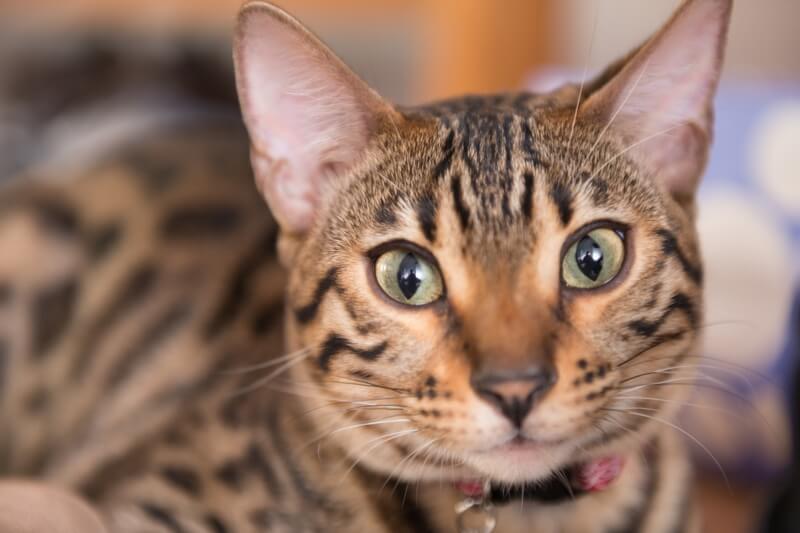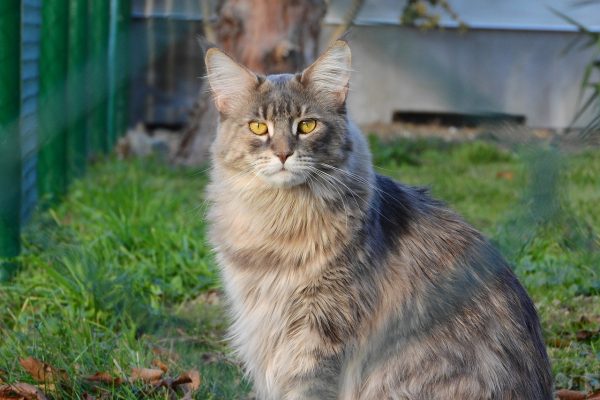Siamese cat behavior problems often stem from their regal nature, as these cats can sometimes display a darker side. With their vocal tendencies and strong personalities, Siamese cats can exhibit issues such as aggression, attention-seeking behavior, and separation anxiety.
Siamese cats are known for their striking blue eyes, sleek coat, and distinctive color points. Originating from Siam (now Thailand), they were once considered sacred and were even kept in temples. While Siamese cats are generally known for being affectionate and social, they can also exhibit challenging behaviors that can leave their owners perplexed.
We will explore some of the common behavior problems associated with Siamese cats, their potential causes, and provide helpful tips on how to address and manage these issues. Understanding and addressing these behaviors will not only ensure a harmonious relationship with your Siamese companion but also provide a happier and healthier environment for both of you.
Contents
- 1 Understanding Siamese Cats’ Unique Personality Traits
- 2 Common Siamese Cat Behavior Problems
- 3 Addressing Excessive Vocalization
- 4 Managing Destructive Behavior
- 5 Handling Separation Anxiety
- 6 Tackling Litter Box Issues
- 7 Overcoming Aggression And Territory Marking
- 8 Promoting Healthy Socialization
- 9 Understanding Siamese Cat Communication
- 10 Seeking Professional Help
- 11 Frequently Asked Questions Of Siamese Cat Behavior Problems: Royalty With A Dark Side?
- 12 Conclusion
Understanding Siamese Cats’ Unique Personality Traits
Siamese cats are known for their unique personality traits, which can sometimes lead to behavior problems. Their inquisitive nature and high intelligence make them curious by default. Siamese cats love to explore their surroundings and will often get into mischief if not properly stimulated. They crave constant interaction and enjoy being the center of attention. Siamese cats are also known for their vocal communication, often using different meows to express their needs and desires. They are not afraid to make their presence known and will demand attention when they want it. Additionally, these cats have a playful nature combined with a mischievous streak. They enjoy interactive toys and games, but can also be known for their knack for getting into trouble. It’s important for Siamese cat owners to provide a stimulating environment and plenty of playtime to prevent behavior problems from arising.
Common Siamese Cat Behavior Problems
Siamese cats are known for their unique personalities and behaviors, but sometimes these behaviors can become a challenge for their owners. Here are some common Siamese cat behavior problems:
Excessive Vocalization And Demanding Attention
Siamese cats are notorious for their loud and persistent vocalizations. They love attention and will meow loudly to get it. Whether it’s early in the morning or late at night, they will let you know when they want your attention. This behavior can be challenging for owners who prefer a quiet living environment.
Destructive Behavior And Scratching Furniture
Siamese cats have a strong need to scratch on surfaces to keep their claws in shape. Unfortunately, this can lead to destructive behavior when they choose furniture or other valuable items as their scratching posts. It’s important to provide them with appropriate scratching posts and deterrents to protect your furniture.
Separation Anxiety And Clinginess
Siamese cats are known for their attachment to their owners and can become quite anxious when left alone. They may display clingy behaviors such as following you around the house or making a fuss when you leave. This separation anxiety can be distressing for both cats and owners, but it can be managed through gradual desensitization and providing them with toys and interactive activities to keep them occupied.
Addressing Excessive Vocalization
Excessive vocalization is a common Siamese cat behavior problem that can be quite challenging to address. Instead of becoming frustrated, it’s paramount to understand the reasons behind this behavior and implement effective techniques to reduce vocalization.
Identifying the reasons behind excessive meowing is crucial. Siamese cats are notorious for their vocal nature, but their meowing may indicate underlying issues. Possible reasons can include attention-seeking, hunger, stress, loneliness, or medical conditions. By observing their body language and patterns, you can gain insights into the cause of their excessive vocalization.
Effective training techniques can play a significant role in reducing vocalization. Positive reinforcement is key, rewarding desired behaviors with treats or praise. Ignore and withhold attention during excessive meowing to discourage the behavior. Providing mental and physical stimulation is also crucial. Engage them in interactive play, offer puzzle toys, and create a stimulating environment to keep them mentally engaged and prevent boredom.
In conclusion, understanding the reasons behind excessive vocalization and implementing effective training techniques can help address Siamese cat behavior problems. By addressing their needs and providing appropriate mental and physical stimulation, you can help your Siamese cat find balance and reduce their vocalization.
Managing Destructive Behavior
Siamese cats are known for their regal nature and striking appearance. However, these feline royalty can sometimes exhibit behavior problems that can be challenging to manage. One common issue is destructive behavior, particularly scratching. Understanding the instinctual need to scratch is crucial in addressing this problem.
Siamese cats have a natural instinct to scratch as a way to mark their territory and keep their claws sharp. Providing appropriate scratching alternatives can redirect their behavior towards more suitable surfaces. Scratching posts, sisal mats, or cardboard scratchers can be enticing options.
Positive reinforcement plays a vital role in encouraging Siamese cats to use designated scratching areas. Praising and rewarding them when they use these surfaces will reinforce the desired behavior. It is important to be consistent and patient during this training process.
By understanding their instinctual need to scratch and offering appropriate alternatives along with positive reinforcement, Siamese cat owners can effectively manage destructive behavior. With patience and consistent training, these beautiful and intelligent cats can learn to channel their scratching tendencies in a more appropriate way.
Handling Separation Anxiety
Siamese Cat Behavior Problems: Royalty With A Dark Side?
| Signs of Separation Anxiety | Descriptions |
| Excessive vocalization | Siamese cats may meow excessively, often in a high-pitched voice, when they feel anxious being alone. |
| Destructive behavior | They may engage in destructive behavior, such as scratching furniture or curtains, when experiencing separation anxiety. |
| Urinating and defecating outside the litter box | Some Siamese cats may exhibit inappropriate elimination as a manifestation of their distress. |
To help a Siamese cat cope with separation anxiety, gradual desensitization to alone time is crucial. Start with short periods of separation and gradually increase the duration to help them adjust. Establishing a comforting routine can also be helpful. Set a predictable schedule for feeding, playtime, and alone time, so they know what to expect. Providing stimuli like interactive toys and puzzle feeders can keep them engaged and distract them from feelings of loneliness. Seek professional advice if the anxiety persists, as a veterinarian or animal behaviorist can provide tailored guidance.
Tackling Litter Box Issues
Proper litter box placement and cleanliness play a crucial role in addressing siamese cat behavior problems related to litter box aversion or preference. Siamese cats are known to be highly particular about their restroom habits, and any deviation from their preferences can result in unwanted behaviors.
Placement And Cleanliness
When it comes to litter box placement, it is essential to find a quiet and secluded area where your siamese cat feels safe and undisturbed. Avoid placing the litter box in high-traffic areas or near noisy appliances as these can deter them from using it.
Keeping the litter box clean is equally important. Siamese cats are particular about cleanliness and may refuse to use a dirty litter box. Regularly scoop out waste and clean the litter box weekly to maintain a hygienic environment.
Potential Health Issues
If your siamese cat consistently avoids using the litter box, it is crucial to consider potential health issues that may be causing this behavior. Urinary tract infections, bladder stones, or kidney problems can be the underlying reasons for litter box aversion or accidents.
If your cat’s litter box issues persist despite your efforts, it is advisable to consult with a veterinarian to rule out any health-related concerns. By addressing litter box problems in a timely manner, you can maintain a harmonious environment for both you and your siamese cat.
Overcoming Aggression And Territory Marking
Siamese Cat Behavior Problems: Royalty With A Dark Side?
Identifying Triggers For Aggressive Behavior
- Pay attention to situations that provoke aggression, such as loud noises or unfamiliar people.
- Observe any changes in body language, such as raised fur, hissing, or a swishing tail.
- Look out for signs of fear or anxiety, like crouching or avoiding eye contact.
Establishing A Safe And Stimulating Environment
Ensure your Siamese cat has a designated safe space where they can retreat to when feeling overwhelmed. Provide plenty of vertical spaces, such as cat trees or shelves, to allow them to feel secure. Introduce interactive toys and regular playtime to engage their natural hunting instincts and release pent-up energy.
Implementing Positive Reinforcement And Training Techniques
Use positive reinforcement to reward good behavior, such as treats or praise when your Siamese cat displays calm behavior or uses the litter box. Redirect their focus by providing alternative outlets for territorial marking, such as scratching posts or designated spraying areas. Consistent training and patience are key to modifying aggressive behavior.

Credit: pethelpful.com
Promoting Healthy Socialization
Encouraging positive interactions with humans and other pets is essential for preventing or addressing Siamese cat behavior problems. Siamese cats are known for their sociable nature, but they can also exhibit territorial and aggressive behaviors if not properly socialized. Introducing them to new environments and experiences gradually can help them feel more comfortable and reduce their stress, anxiety, and the potential for behavior issues. Monitoring their behavior and addressing any signs of stress or anxiety is crucial. This can include providing a safe space for them to retreat to, using positive reinforcement techniques, and seeking professional help if needed. By promoting healthy socialization and addressing any behavior problems promptly, Siamese cats can maintain their regal essence without succumbing to a dark side.
Understanding Siamese Cat Communication
Siamese cats are known for their unique and vocal behavior. Understanding their communication is essential in order to build a strong bond and address any behavior problems they may have. Vocalizations are a key aspect of Siamese cat communication. These include meowing, purring, hissing, and growling. By paying attention to the tone and intensity of these vocalizations, you can get a better understanding of what your Siamese cat is trying to convey.
Another important aspect of communication is reading their body language and facial expressions. Siamese cats have expressive eyes and their body posture can reveal a lot about their mood. For example, a raised tail and relaxed posture indicate a content and friendly demeanor, while an arched back and puffed-up tail may indicate aggression or fear.
When interacting with a Siamese cat, it is crucial to respond appropriately to ensure effective communication. This includes using positive reinforcement techniques, such as treats and praise, to encourage desired behaviors and redirecting unwanted behaviors with gentle corrections. Consistency and patience are key in addressing any behavior problems and fostering a harmonious relationship with your Siamese cat.
Seeking Professional Help
Understanding the benefits of professional guidance is crucial when dealing with Siamese cat behavior problems. While it is natural to try and address the issues on your own, there are times where consulting a veterinarian or animal behaviorist becomes necessary.
1. When to consider consulting a veterinarian or animal behaviorist:
– Excessive vocalization or aggression: If your Siamese cat’s behavior is becoming increasingly vocal or aggressive, it may indicate an underlying health issue or behavioral problem that requires professional attention.
– Litter box issues: Persistent litter box problems can be a sign that there is an underlying medical condition or a behavioral issue that needs to be addressed by a professional.
– Destructive behavior: If your Siamese cat is showing destructive behavior such as scratching furniture or curtains, seeking professional help can provide you with effective strategies to modify this behavior.
2. Working together to develop a tailored behavior modification plan:
Collaborating with a veterinarian or animal behaviorist allows for a comprehensive evaluation of your Siamese cat’s behavior and the development of a behavior modification plan tailored specifically to your pet’s needs. This plan may include environmental enrichment, positive reinforcement training, and, if necessary, medication.
Frequently Asked Questions Of Siamese Cat Behavior Problems: Royalty With A Dark Side?
Do Siamese Cats Have Behavioral Issues?
Siamese cats can sometimes have behavioral issues due to their high energy levels and need for attention. This can include excessive vocalization, aggression, and separation anxiety. Proper socialization, mental stimulation, and a consistent routine can help alleviate these issues in Siamese cats.
Why Is My Siamese Cat So Aggressive?
Siamese cats can be aggressive due to their high energy levels and strong personalities. This breed tends to demand attention and may resort to aggression if their needs aren’t met. Proper socialization, mental stimulation, and regular playtime can help manage their aggression.
How Do You Discipline A Siamese Cat?
Disciplining a Siamese cat involves positive reinforcement with treats or praise for good behavior, and redirecting unwanted behavior with toys or scratching posts. Avoid punishment or yelling, as it can cause fear or aggression. Consistency and patience are key in training your Siamese cat.
What Causes A Siamese Cat To Have Dark Fur In Some Areas?
The dark fur in certain areas of a Siamese cat is caused by a genetic trait called color-point. It is a result of the cat’s body temperature being cooler in those areas which activates the gene responsible for dark pigmentation.
Conclusion
Siamese cat behavior problems may seem synonymous with their regal nature, but these feline beauties possess a dark side. From demanding vocalizations to territorial behavior, understanding their temperamental characteristics is crucial in providing a loving and harmonious environment. Through awareness, patience, and proper training, Siamese cats can become exquisite companions for those who appreciate their spirited nature.
So embrace the royal challenges, and embark on an enchanting journey with your Siamese cat.

Katie Lindsey is a passionate cat lover and founder of Cats Solution, a comprehensive resource for all things feline. With a lifelong love for cats and extensive knowledge in their care and behavior, she provides expert advice and solutions to cat owners. Through her website, Katie fosters a supportive community where cat enthusiasts can find guidance and heartwarming stories. A dedicated advocate for animal welfare, Katie also promotes responsible pet ownership and adoption. Join her on this purr-fect journey celebrating the joy of feline companionship.



